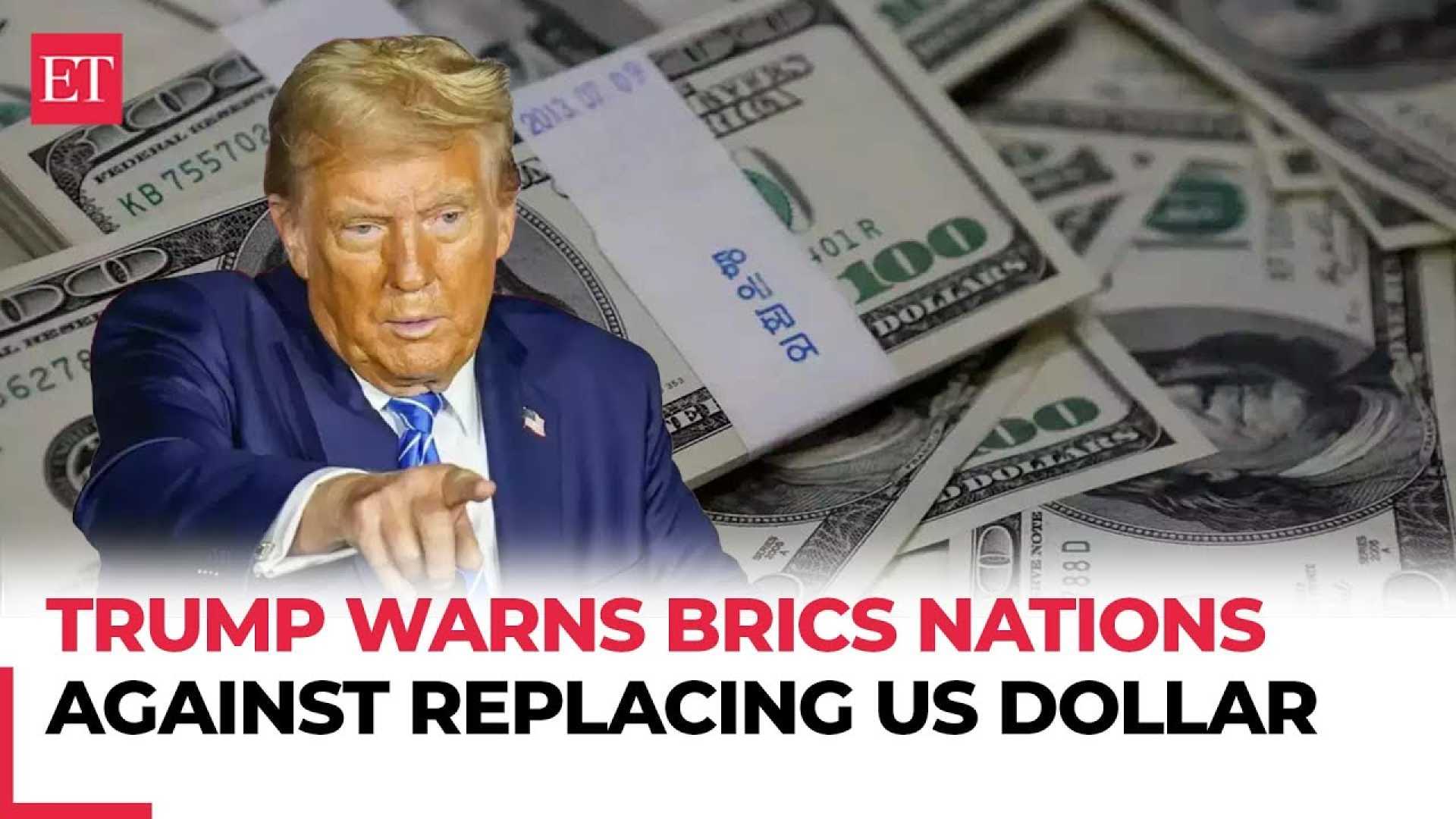Politics
Trump Threatens 100% Tariffs on BRICS Nations Over Currency Plans

WASHINGTON — U.S. President Donald Trump declared on Thursday that nations within the BRICS alliance could face 100% tariffs from the United States if they continue to challenge the supremacy of the U.S. dollar. Responding to a question regarding BRICS’ potential move towards a shared currency, Trump stated, “If any trading gets through, it’ll be 100% tariff, at least.” This comment reflects his ongoing assertion that the U.S. dollar must remain the dominant global reserve currency.
Trump immediately reinforced this position upon taking office, framing high tariffs as a deterrent to nations considering de-dollarization strategies. The President views BRICS, which includes Brazil, Russia, India, China, South Africa, Egypt, Ethiopia, Indonesia, Iran, and the United Arab Emirates, as a serious challenge to the dollar’s global standing, contrary to earlier White House assessments that deemed BRICS non-threatening.
An August 2023 White House report downplayed the geopolitical threat posed by BRICS nations, arguing their differing priorities preclude unified action against the United States. Still, Trump’s administration appears intent on using tariffs as a means to encourage countries to align more closely with U.S. economic interests. This tactic aims to discourage any moves toward a BRICS-based currency.
Scott Bessent, Trump’s nominee for Treasury Secretary, elaborated on this strategy in a recent interview, drawing parallels between tariffs and nuclear deterrence. He explained that imposing tariffs could be a tactical effort to eliminate such barriers in the long run: “You can put tariffs on with the idea of getting rid of all the tariffs.” This model is similar to the use of economic sanctions, a tool that can lead nations to distance themselves from the dollar if applied excessively.
Recent events underline this ongoing strategic shift. Following Russia’s invasion of Ukraine, Western nations seized approximately $300 billion in Russian Central Bank assets. In response, Russia has introduced legislation allowing it to confiscate assets from countries it deems “unfriendly.”
Against this backdrop, Russian President Vladimir Putin has sought to portray himself as a champion of the Global South, calling out what he terms the West’s “neo-colonial practices.” Putin has insisted that the West’s actions provoke greater animosity, stating, “We never tried to oust anyone from our market.” This aligns with a broader narrative from Moscow and Beijing, which position themselves as alternative sources of economic aid that do not impose conditions on governance.
As Washington works to maintain the dollar’s dominance, it faces the challenge of countering prolonged hostility toward its economic influence. In an example of using tariffs to achieve immediate outcomes, Trump recently threatened a 25% tariff on Colombian goods after President Gustavo Petro refused to accept flights carrying deported migrants. Within hours, Petro acquiesced and offered to send a presidential plane for the migrants.
Trump has also leveraged tariffs to negotiate benefits from neighboring countries. Mexican President Claudia Sheinbaum agreed to deploy National Guard troops to the U.S.-Mexico border in exchange for a delay in the implementation of a significant import tariff. Similar arrangements have been struck with Canadian Prime Minister Justin Trudeau concerning border security.
While Trump aims for immediate political leverage, especially regarding Russia, he and his advisers forecast longer-term benefits through strategic tariff applications designed to spur U.S. manufacturing. Bessent noted, “We are trying to make China rebalance,” arguing that tariffs could lead to enhanced job creation in the U.S. and reduce dependency on foreign supply chains.
However, there is a risk that such tariffs could drive countries to adopt alternative payment systems, potentially moving them away from dollar use altogether. This contrasts with sanctions, which often push nations closer to rivals like Russia and China.
The challenge remains for the Trump administration to implement tariffs effectively without inflaming tensions or accelerating economic shifts that could undermine U.S. financial supremacy. The nuanced approach of using tariffs rather than sanctions may allow for more gradual adjustments in international trade relations, although the potential for backlash must be carefully managed.
Ultimately, Trump views BRICS as a formidable challenge to established economic norms, and while he remains aggressive in his tariff strategy, the complexities of global economics will necessitate a careful balance between pressure and partnership.












